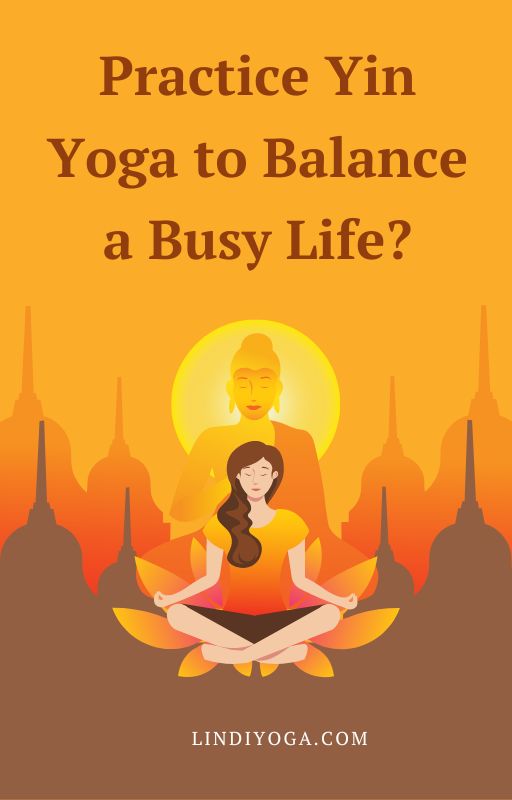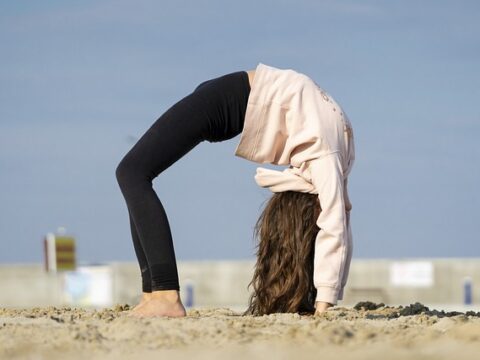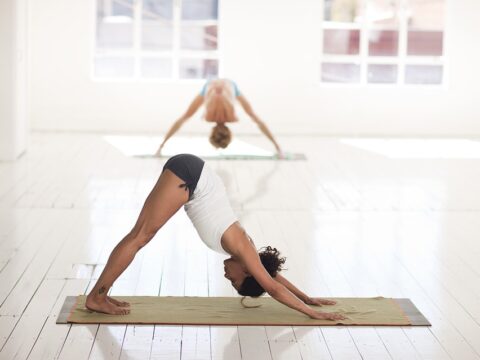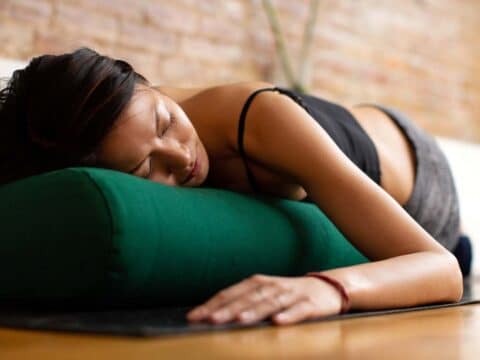What is Yin Yoga? Yin Yoga is a slow form of yoga that incorporates the principles of traditional Chinese medicine. This style emphasises staying in the asanas for long periods of time and advanced practitioners can stay in a single pose for five minutes or longer. These slow sessions are a great way to help your body heal and relax itself.
This form of yoga focuses on helping your body release stored emotions. Many people practice yin because it allows them to feel completely relaxed.
The name of this type of yoga comes from the Taoist concept of yin and yang, the two opposite polarities of energy. In Taoist philosophy, yin is passive and yang is active, and these two opposites are the sources of yin.
Podcast
Yin yoga was developed as a means of achieving balance. As a result, it has gained popularity, especially among people who recognise the need to invest in their health.
Another key element of Yin Yoga is breathing. In the practice, it is important to breathe deeply from the diaphragm. This helps you to focus when practising more difficult poses. Also, when breathing deeply, draw your navel towards your spine.
Yin yoga as a balance to a hectic life
Yin yoga is a form of yoga that involves being still and focusing on deep breathing. The movements and postures are meant to promote relaxation, mental clarity and an energetic connection. Although Yin Yoga poses can feel intense, they help to improve flexibility and provide a sense of ease.
Yin yoga helps you become more present by letting go of your emotions and allowing yourself to experience the full spectrum of your feelings. When you let your emotions out and become more aware of them, you will find that suppressing them only wastes energy. When you free yourself from holding on to negative emotions, you can move forward more easily.
When you practise Yin Yoga, you can bring these principles into your daily life. By learning to listen to your body and your thoughts, you will be able to recognise which areas need special attention and when you should sleep more.
Yin yoga also helps you to tune into your emotional state so that you can make the most of your practice. The open and flexible nature of this practice allows you to experiment with the techniques.
Yin Yoga is based on the ancient Vedic teachings. The Vedas, the ancient spiritual texts of India, describe yoga as a state of contentment and balance. Therefore, Yin Yoga emphasises mindfulness and meditation. It also advocates the practice of longer held poses. In addition, Yin Yoga also includes postures used by Chinese Taoists.
The benefits of Yin Yoga
The benefits of Yin Yoga include deep relaxation, increased strength and a better sense of balance. The slow, gentle movements address the body’s connective tissues more effectively than other forms of yoga. It is also beneficial for people with low energy levels. In addition, Yin Yoga can enhance the effect of a dynamic practice.
In addition to the physical exercises, Yin Yoga classes also emphasise the mental exercises. By isolating the mind and allowing it to explore subtle movement patterns, Yin Yoga helps its practitioners deal with their negative mindsets and thoughts.
Although this type of yoga is not suitable for everyone, it can be a beneficial practice for those who have a physically demanding job or work in a physically demanding environment.
Yin Yoga is a form of yoga that uses the principles of Eastern and Western martial arts and combines them with Hatha Yoga. It has also been influenced by Western teachers and incorporates aspects of Taoist philosophy and Buddhist meditation practices. An added benefit is that most Yin classes also include silence, which encourages the practitioner to focus on their breath.
What parts of the body does Yin Yoga focus on?
Yin yoga focuses on the connective tissues that link the bones and muscles together. This type of yoga helps to improve circulation to the joints and restore flexibility. Over time, the body loses the elasticity of the connective tissue, leading to pain and stiffness. In addition, Yin poses help to lengthen and strengthen the connective tissue.
Yin yoga poses are usually held for three to five minutes, but you can also hold them for up to 20 minutes. This type of yoga is a good choice for people who want to stretch their connective tissue and relieve stress. Yin yoga poses are also suitable for people with stiff joints, so they are especially beneficial for people who suffer from osteoarthritis.
Yin yoga poses focus on manipulating and releasing the fascia, a deep connective tissue. Unlike dynamic forms of yoga, Yin Yoga poses are held for several minutes at a time. This allows the connective tissue to stretch and improve freedom of movement.
A Yin Yoga class has a slow, meditative pace and may include props. They are used to make the poses more comfortable and help the body to relax more deeply. Props can range from bolsters and blocks to eye pillows and straps. If you don’t have any of these tools available, you can also use a towel to support your body while you practice.
What to expect from a Yin Yoga class
A Yin Yoga class is slow and restorative. It is ideal for people who are prone to injury and chronic illness, as it is gentler on the body than more active styles of yoga.
Because of its internal focus, it can also be helpful for meditation practitioners. Although not a vigorous yoga class like Vinyasa Flow, Yin Yoga still offers an excellent workout and a variety of benefits, including a greater sense of relaxation and greater flexibility of joints and range of motion.
A Yin Yoga class usually begins with meditation or breathing exercises. It can also begin with a supported child’s pose or a seated position. This allows the body to recover and relax from the stress of the previous posture. It is important that the body is able to recover properly from each session, otherwise the pressure on the muscles will increase.
Another benefit of Yin Yoga is that it strengthens the connective tissues and fascia of the body. These tissues are located in the joints and help to maintain a healthy balance. The stress of daily life puts a strain on the body. Yin yoga helps to restore balance and strengthen the fascia and connective tissues.
If you are a beginner or don’t know much about this practice yet, Yin Yoga classes are ideal for you. They usually take place at a slow pace and focus on the connective tissue of the body. Yin Yoga requires a relaxed and comfortable body. So you should wear warm, comfortable clothes that do not irritate the muscles.
7 Balancing Yin Yoga Poses for a More Relaxed Life
Before trying yoga poses, consult a yoga professional and let them know of any injuries or pain.
How does the Butterfly (Bhadrasana) Yoga Pose work?
The butterfly yoga pose is a great way to stretch your body, especially your lower back. To perform this pose, you need to lie against a wall with your legs raised and hips up.
Bend your knees and squeeze your toes together to stretch the insides of your thighs. For extra support, you can use a yoga block or blanket to support your hips and toes. You can also use the wall for extra support to help you maintain your balance in this pose.
Pay special attention to your breathing when doing this pose. If you have back pain or an injury, consult your doctor before doing this stretch. Also, if you have an injury to your knees or back, do not attempt this pose.
Also remember that stretching your legs too far can cause injury. For this reason, you should perform the butterfly pose on a soft surface and stop if you feel pain.
If you feel tension in your lower back, you should start to raise your seat. This will help you stretch your hips and pelvis and relieve tension in your upper back and neck. You should also keep your head in line with your spine and look forward to lengthen your neck.
How to do the Yoga Saddle Pose (Supta Virasana)
When you are in the Yoga Saddle Pose, make sure you are breathing evenly and slowly. Focus on your pelvis, left knee and quadriceps. Pay attention to whether you feel any pain or numbness in these areas. If you have any of these problems, you should avoid this pose.
Once you have made sure that you are breathing properly, you can begin the pose. Start in half-saddle and then open your arms. This will allow you to relax your body and open the belly side of your body.
Then lean back until you feel your abdominal meridian activating. If you need a little extra support in the knees, you can sit on a bolster to help with the posture.
Depending on your physique, you may find it difficult to hold the saddle. In this case, you can support your lower back with a blanket or rolled-up towel. You can also use a yoga bolster to increase your hip flexors. This will increase the angle of extension.
The saddle is an excellent Yin Yoga pose that exercises the lumbar and sacral regions. It also stretches the hip flexors and quadriceps. It is also ideal for people who spend most of the day sitting. However, you should not try this pose if you have back or knee problems.
How does the Seal (Yogamudrasana) Yoga Pose go?
The seal yoga pose is a deep variation of the sphinx pose. It trains the lower lumbar spine and the entire spine. You can practise this pose passively or with an active approach. A bolster under your pelvis or forearms can be helpful to avoid pressure on the pubic bone. If you have back pain, be sure to consult your doctor first!
To begin, place your hands on the front corners of your yoga mat. Your palms should be in line with your elbows. Bend your elbows and apply firm pressure to your fingertips. You can also place your chin on the floor instead of your forehead. Hold the pose for three breaths.
You can also practise the sealing pose with your hands folded outwards and slightly forwards. This compresses the lower back more and allows you to breathe more deeply. To deepen the experience, you can bend your knees or place a bolster under your forehead. A bolster is helpful if you have difficulty holding this position for a long time.
The yoga pose seal can help heal a damaged disc in the back. It lowers the neck and lower back, but is not as deep as the saddle. It is also safe for pregnant women. The Gate of Life, located between the L2 and L3 vertebrae, houses the Jing energy.
How does the Shoelace (Gomukhasana) Yoga Pose go?
The Shoelace Yoga Pose is a do-it-yourself version of the iliotibial band stretch. It can be a little uncomfortable, so start slowly and adjust as needed to avoid injury.
To begin, lie on the floor or a stool, cross your legs and pull your knees together with your hands. Remember that one side of the body tends to be easier to adjust than the other.
This stretch is good for the heart and promotes better circulation. It can also help relieve stress and ease frustration. This pose is easy to learn and is an excellent first exercise for anyone who has never practised yoga before. Ideally, you should do this pose for three to five minutes. You can also do it in a yin style or with a strengthening intention.
Shoelace pose is a great warm-up for more intense poses that open up the hips. Once you are ready, try it on a wall to better understand the pose.
This pose is one of the most common poses to learn. Start on your hands and knees and place your left knee behind your right knee. Finally, move your right knee up and continue upwards.
Your calves should point outwards like untied shoelaces, and you can change the distance between your lower leg and your hip to achieve the stretch you want.
How does the Dragonfly (Konasana) Yoga Pose go?
Dragonfly Yoga Pose is a gentle, stretching pose for the back that is often associated with yoga. It is a good choice for people with lower back pain because of its calming effect.
This pose can be held for between two and five minutes, depending on the person. The key to holding the pose is to focus on your breath and the sensations in your body. It is also beneficial to counter your movement with a windshield wiper movement if you have difficulty holding it.
If you have some experience with yoga, you can try the dragonfly pose to test your limits. It is also a great way to learn about your emotions.
For example, if your fasciae are tight, it could mean that you have experienced some emotional trauma that needs to be released. This pose opens up your deeper tissues and improves the core strength and power of your spinal muscles.
You may also want to try the half dragonfly variation, which improves your hip mobility while stretching your hamstrings and spine. The Dragonfly not only strengthens your back and hips, but also stimulates the meridians in your bladder and gallbladder.
How does the Reclining Twist (Jathara Parivritti) Yoga Pose work?
The reclining twist pose is a balancing pose. It can be done with a mat and two pads or blocks or even a folded blanket.
Begin by placing one of the blocks lengthwise on the right side of the mat and the other on the left side. Now bend your knees towards your chest and grasp the sides of your thighs. Rock from side to side, taking deep breaths as you do so.
If you prefer a belt, you can place it behind your knees. Alternatively, you can hold it in your hand while you twist. This is an active support as it allows you to turn deeper. You can then rock from side to side, switching sides after a few minutes.
A variation of the pose is the Twisted Roots. Instead of bringing your legs into a flat position, cross them and tuck the top foot into the calf of the other leg. This variation of the Reclining Twist helps you open up your chest while reducing the strain on your knee joints.
The right knee is placed in front of the left knee. The right knee is brought towards the chest and pressed down. The left leg remains straight. To get into this twist, you can also hook your right foot behind your left knee. When you feel comfortable in this twist, you can hold the pose for five to 10 breaths.
How does the Happy Baby (Ananda Balasana) Yoga Pose go?
In yoga, the Happy Baby pose can be modified for different levels of practitioners. Beginners can start with the basic version, advanced practitioners can modify it with straps or exercise bands.
When performing the pose, make sure that both feet are flexed and the tailbone remains on the floor. If your hips are tight or you have injuries, you should modify the position.
The Happy Baby Yoga pose can also be challenging if your hamstrings are tight. Tight hamstrings can cause problems with your lower back and shoulders. If they are too tight, they can also cause leg cramps.
In addition, a tight Achilles tendon can lead to a round lower back. All of this affects the rest of your body too, so make sure your hamstrings are loose.
For a lighter version of Happy Baby Yoga pose, you can place a yoga strap behind your knees. You can either place the straps behind your knees or around your feet. In either case, you need to adjust the straps so that your legs meet. This will help you improve your flexibility and range of motion.
If you are a beginner or have limited mobility, the Happy Baby Pose might be too much of a challenge for you. Remember that this pose is a stretch and should never be forced. Once you loosen your hips, spine and shoulders, the magic unfolds.




